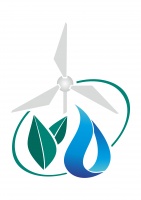Сравнение практик
| Название практики | Using MASSCOTE methodology for express assessment of the condition of Vakhdat municipal irrigation system | Arrangement of springs to improve stock watering |
|---|---|---|
| Категория | Водные ресурсы | Водные ресурсы |
| Инструмент | Методология MASSCOTE | Принцип общественного участия |
| Сфера использования практики |
|
Use of water resources |
| Пригодность практики для адаптации к изменению климата | Умеренная | Умеренная |
| Кем реализована практика | UN FAO in the Republic of Tajikistan |
CAMP-Alatoo Public Foundation (PF) |
| Где использована практика |
Страна: Таджикистан Область: Районы республиканского подчинения Район: Вахдатский Другой населенный пункт: town of Vakhdat |
Страна: Кыргызстан Область: Чуйская Район: Сокулукский |
| Специфика местности, где использована практика | Located in the Kafirnigan River Basin (river catchment area) |
The site is located in a semi-drought zone subject to acute shortage of water resources in summer period and land degradation |
| Когда использована практика |
Дата начала: 01.10.2016 Дата окончания: 31.12.2016 |
Дата начала: 01.01.2011 Дата окончания: 31.12.2011 |
| Проблема, которая решается применением практики | Poor technical condition, operation and maintenance of the irrigation system |
Extremely low water availability (supply) of pastures; the quantity of cattle in watering sites below standard; land erosion |
| Примененные в практике инструменты | MASSCOTE methodology |
Technology of springs arrangement for stock watering |
| Описание практики и ее результаты | Actions: Mapping of the system and services depending on canals’ purpose. Results: Financial and economic: economically effective, fair and sustainable water resource management. Ecological: integrated protection of key environmental elements, including prevention of raising ground water level and secondary soil salination as well as irrigation-induced soil erosion, etc. Technical: improved technical characteristics of municipal water supply to different stakeholders. Social: enhanced welfare of farm employees due to increased income. |
Actions: At first, the exact location of water outcrop was identified and cleaned from mud. 15 meters below the outcrop, 3 interconnected water tubs were installed (each 1.8 m long, 0.5 m wide and 0.5 deep). Each subsequent tub is located lower than the preceding one, thus, allowing water flowing down in the cascade manner. Results: Financial and economic: Cattle gaining weight quicker. Technical: Improved water supply in the area, including for cattle watering. |
| Какие уроки и рекомендации можно извлечь из практики | Lessons learnt: Express assessment based on MASSCOTE methodology allows to improve the planning of upgrading efforts to ensure better servicing of diversified water uses requiring higher supply flexibility and cost reduction. Recommendations: It is necessary to widely deploy the MASSCOTE methodology of express assessment of the condition of irrigation systems and enhancing their operation. |
Lessons learnt: Collection of water in one place had been practiced since ancient times, but was forgotten over time. Rehabilitation of traditional practices should be welcomed. Recommendations: Similar practices should be scaled-up and continued as they not only benefit the local population, but also allow enhancing water availability for wild animals and expanding hayfield meadows. |
| Источник практики | Foreign tools (transfer of foreign experience) |
Traditional tools transferred from generation to generation which demonstrate their relevance in modern conditions |
| Готовность практики к внедрению |
1. Затраты на внедрение: Высокие 2. Примерная стоимость капиталовложений на 1 га: 3. Затраты на поддержание и эксплуатацию: Высокие 4. Экспертная поддержка: Не требуется |
1. Затраты на внедрение: Высокие 2. Примерная стоимость капиталовложений на 1 га: 3. Затраты на поддержание и эксплуатацию: Высокие 4. Экспертная поддержка: Не требуется |
| Краткая информация о проекте | Project title: Using MASSCOTE methodology for express assessment of the condition of Vakhdat municipal irrigation system. Project duration: 2016. Project goal and objectives: designing the irrigation system upgrading and management plan based on MASSCOTE methodology of process diagnostics and assessment of irrigation system performance. Project beneficiaries: land and water users. Project implementer: UN FAO. |
|
| Источник финансирования практики | United Nations Food and Agriculture Organization (UN FAO) in the Republic of Tajikistan | PF “CAMP-Alatoo”, local population |
| Источники информации о практике | WOCAT.net, Mr. Abdybek Asanaliyev (e-mail: asanaly61@mail.ru), Kyrgyz National Agriculture University, Bishkek |
|
| Контактные данные лица, заполнившего форму | SIC ICWC |
SIC ICWC |
| Дата заполнения формы | 03.04.2018 | 30.03.2018 |




